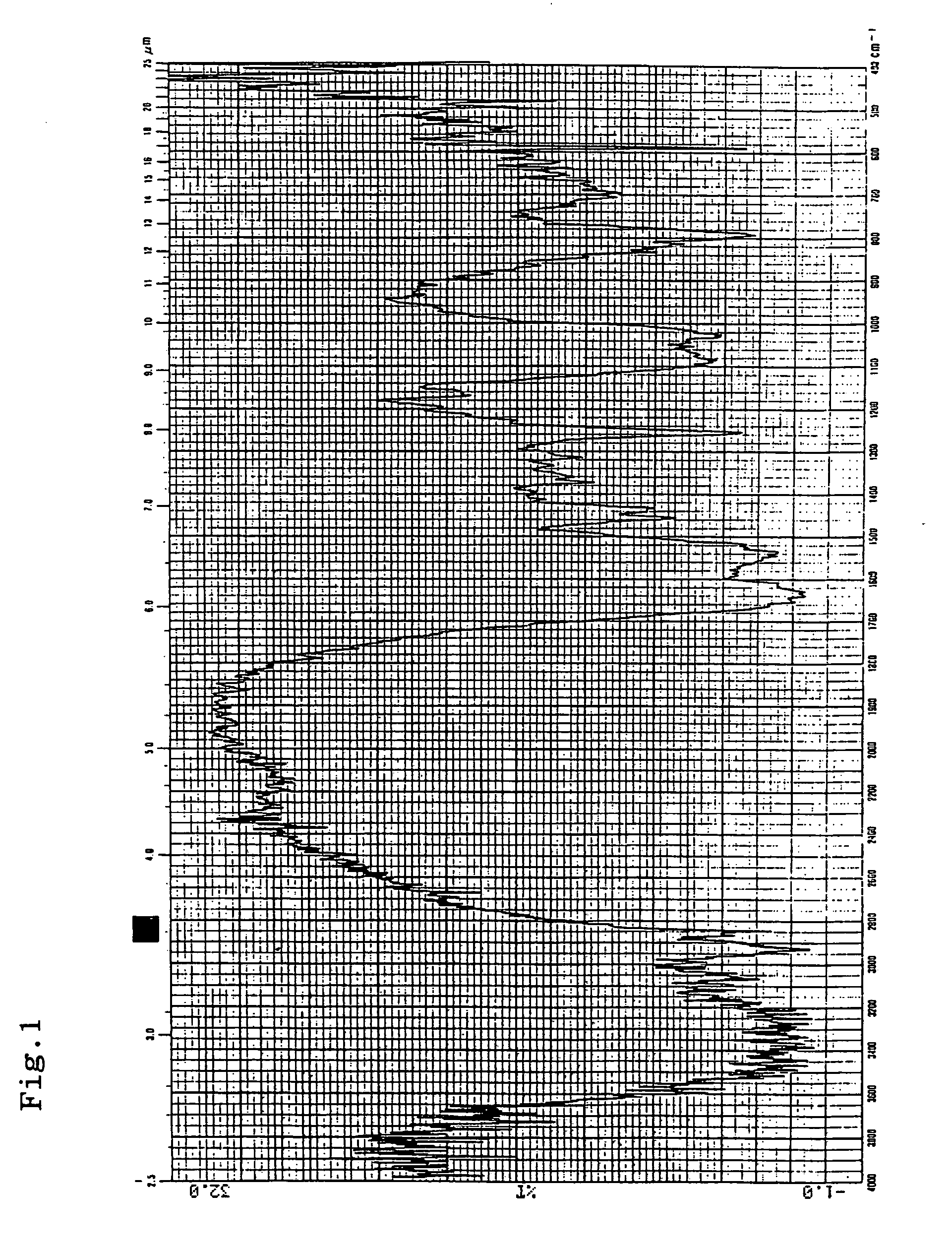Cosmetic composition and production thereof
a technology of composition and composition, applied in the field of cosmetic composition, can solve the problem that the mixture of epsilon-polylysine and polyorganosiloxane cannot be uniform, and achieve the effects of improving the preservative and/or antibacterial effect, reducing the amount of antibacterial preservative agent, and high safety
- Summary
- Abstract
- Description
- Claims
- Application Information
AI Technical Summary
Benefits of technology
Problems solved by technology
Method used
Image
Examples
synthesis example 1
[0134] A 100-mL three-necked flask equipped with a magnetic stirrer, a condenser tube, and a thermometer was charged with 10.0 g of epsilon-polylysine (number average molecular weight: 4,090) and 30 g of methanol. The mixture was stirred at room temperature to dissolve the epsilon-polylysine. Then, the temperature was increased to 50 degrees C., and 2.1 g (8.05×10−3 mol) of (3-glycidoxypropyl)-pentamethyldisiloxane represented by the general formula (9) was added dropwise for 5 minutes. The reaction was continued for 3 hours while the temperature was kept at 50 degrees C. After 3 hours, the reaction mixture was cooled and 10.0 g of ethanol was added thereto. Subsequently, volatile components in the reaction mixture were removed on an evaporator under reduced pressure to yield 11.8 g of pentamethylsiloxane-containing epsilon-polylysine as a slightly yellow solid.
synthesis example 2
[0135] A 100-mL three-necked flask equipped with a magnetic stirrer, a condenser tube, and a thermometer was charged with 10.0 g of epsilon-polylysine (number average molecular weight: 4,090) and 30.0 g of methanol. The mixture was stirred at room temperature to dissolve the epsilon-polylysine. Then, 20.0 g of 2-propanol was added, the temperature was increased to 70 degrees C., and 2.9 g of polydimethylsiloxane (number average molecular weight: 1,000) represented by the general formula (10) having an epoxy group at one end was added dropwise for 5 minutes. The reaction was continued for 3 hours while the temperature was kept at 70 degrees C. After the reaction mixture was cooled to room temperature, volatile components in the reaction mixture were removed on an evaporator under reduced pressure to yield 12.6 g of polydimethylsiloxane-containing epsilon-polylysine as a slightly yellow solid. This compound had a residual amino group content of 97% and silicone / epsilon−polylysine=23 / 7...
synthesis example 3
[0136] A 100-mL three-necked flask equipped with a magnetic stirrer, a condenser tube, and a thermometer was charged with 5.0 g of epsilon-polylysine (number average molecular weight=4,090) and 30.0 g of methanol. The mixture was stirred at room temperature to dissolve the epsilon-polylysine. The temperature was increased to 50 degrees C., and then 5.0 g (33.8×10−3 mol) of (3-glycidoxypropyl)-pentamethyldisiloxane represented by the aforementioned general formula (9) was added dropwise for 10 minutes. The reaction was continued for 3 hours while the temperature was kept at 50 degrees C. After 3 hours, the reaction mixture was cooled and 10.0 g of ethanol was added thereto. Subsequently, volatile components in the reaction mixture were removed on an evaporator under reduced pressure to yield 10.0 g of yellow syrupy compound, pentamethylsiloxane-containing epsilon-polylysine. This polymer had a residual amino group content of 50% and silicone / epsilon−polylysine=50 / 50 (weight ratio).
PUM
| Property | Measurement | Unit |
|---|---|---|
| Fraction | aaaaa | aaaaa |
| Percent by mass | aaaaa | aaaaa |
| Fraction | aaaaa | aaaaa |
Abstract
Description
Claims
Application Information
 Login to View More
Login to View More - R&D
- Intellectual Property
- Life Sciences
- Materials
- Tech Scout
- Unparalleled Data Quality
- Higher Quality Content
- 60% Fewer Hallucinations
Browse by: Latest US Patents, China's latest patents, Technical Efficacy Thesaurus, Application Domain, Technology Topic, Popular Technical Reports.
© 2025 PatSnap. All rights reserved.Legal|Privacy policy|Modern Slavery Act Transparency Statement|Sitemap|About US| Contact US: help@patsnap.com



